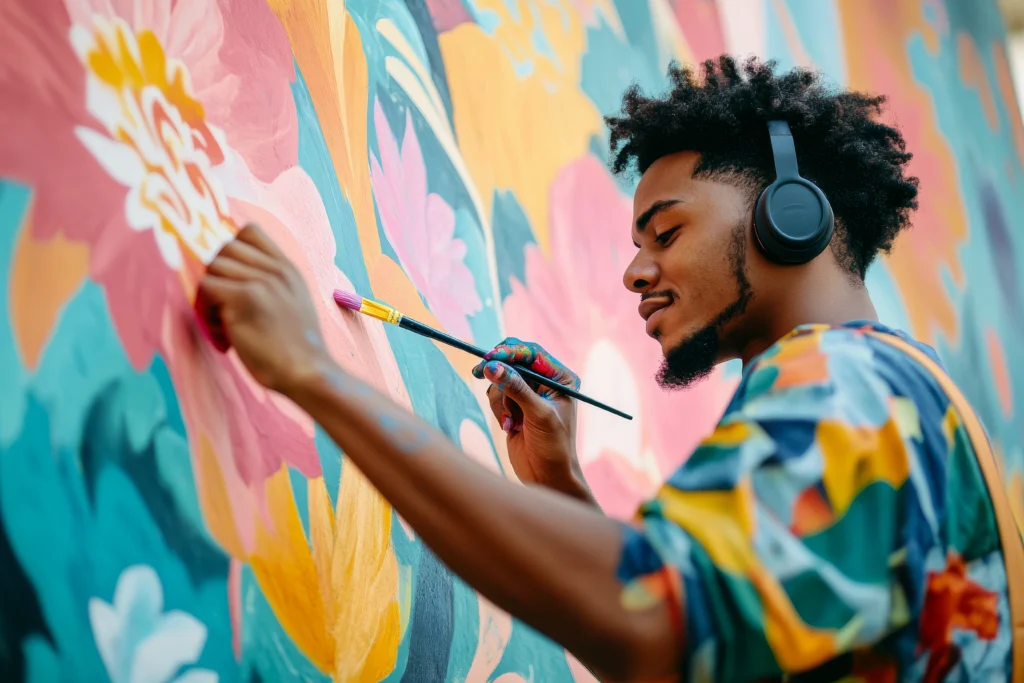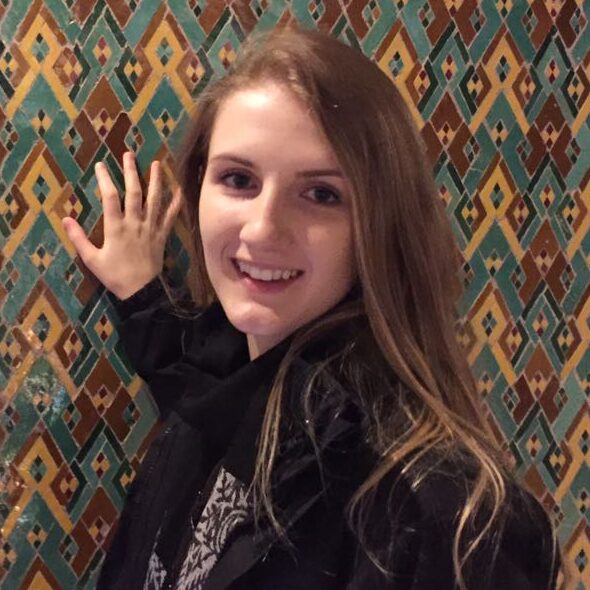The Connection Between Music and Painting
Music and painting are two art forms that may seem completely distinct at first glance, but they have much more in common than we think. Both can be used to express emotions, tell stories, and above all, communicate something that words cannot. Just as a brushstroke, like a melody, has rhythm, harmony, and cadence. In this article, we’ll explore how musical rhythm can be translated into brushstrokes, creating a fusion between music and painting. Practically, we will see how brushstrokes can imitate musical styles and how we can use colors and shapes to express what we hear.
The Language of Music: Rhythm, Harmony, and Dissonance
Musical Rhythm: Short and Long Movements
Musical rhythm is one of the core elements of music, a fundamental component that defines the pace and dynamics of a piece. Just like a composer uses fast and short beats or long and fluid ones, an artist can translate these qualities into painting. Let’s explore the connections:
- Short, fast rhythms (staccato): Staccato is a musical technique where notes are played quickly and detached. This can be translated into short, quick brushstrokes, creating a sense of rapid and energetic movement on the canvas.
- Long, fluid rhythms (legato): In contrast, legato is when the notes are played smoothly and continuously, without pauses. This can be expressed in long, fluid brushstrokes, giving the work a sense of calm and continuity.
Musical Harmony: Translating Colors
In music, harmony is the combination of notes that create pleasing or dissonant chords. In painting, colors play a similar role. When choosing colors for a piece, we can create color harmonies that align with the idea of a perfect musical chord, or opt for color contrasts that generate dissonance and tension, like in an improvised jazz piece.
- Color Harmony: When we use colors that are close on the color wheel (such as shades of blue and green), we create a sense of balance and tranquility, similar to a soft and harmonious musical chord.
- Color Dissonance: In a jazz piece, for example, dissonant chords create tension and resolution. Similarly, using contrasting colors like red and green can create a sense of “conflict” in the artwork, making the viewer’s eye move around the canvas in search of balance.
Musical Cadence: How It Influences Visual Composition
Just as a musical composition follows a cadence, or a sequence of notes and pauses, visual composition also follows a flow and order. Every element in a painting can be thought of as a “note” within a visual cadence. By organizing elements on the canvas, we are creating a visual narrative that guides the viewer’s eye, much like what happens in a musical piece.
Practical Exercises: Transitioning Between Music and Painting
Exercise 1: Painting the Rhythm of Staccato
For this exercise, play a piece of music with a fast and rhythmic beat. It could be an upbeat classical piece or even something modern with fast beats, like a pop song. Pay attention to how the beats repeat. Now, with a blank canvas and acrylic paint, try to paint using short and quick brushstrokes. The goal here is to capture the movement and energy of the music. Experiment with vibrant and contrasting colors like red and yellow to convey this energy.
Exercise 2: Painting the Rhythm of Legato
Next, choose a softer piece of music, such as a classical piano piece or a ballad. Observe how the notes flow smoothly from one to the next. With that in mind, try painting using long, fluid brushstrokes, almost as if you were “drawing” with the paint. Choose softer and more harmonious colors like shades of blue or green to create a sense of serenity and continuity in your painting.
Exercise 3: Creating a Jazz Artwork: Visual Improvisation
For this exercise, choose a piece of improvisational jazz music. Notice how musicians play with harmony and dissonance, creating moments of tension and resolution. Take a contrasting color palette, such as red, green, and blue, and begin painting freely, without worrying too much about precision. Let the colors “clash” on the canvas, creating a sense of movement, improvisation, and complexity, much like a jazz solo.

Composing a Complete Visual Piece Based on a Full Song
Now that you’ve practiced different aspects of music visually, the challenge is to create a full piece inspired by an entire song. Choose a piece of music you love – it could be a symphony, a jazz piece, or even a pop song. Break the music into different movements and think about how you can translate each section onto the canvas. Use short brushstrokes for the faster, energetic parts and long strokes for the calmer passages. Choose the colors according to the mood of the music, and arrange the elements on the canvas as if they were a score, with “crescendo” and “diminuendo” (increasing and decreasing rhythm and intensity).
The Rhythm of the Brush is Your Own Music
Painting, like music, is a universal language that allows us to express our deepest emotions and thoughts. By exploring the relationship between musical rhythm and brushstrokes, colors, and visual composition, you can create artworks that not only capture a feeling but also resonate with the movement and cadence of music. Now, the question is: what music inspires the rhythm of your brush? And more importantly, what song would you transform into brushstrokes?
Now that you have all the information to start painting with the rhythm of music, why not put the tips into practice? If you’re already creating your first pieces, share your experiences and favorite techniques in the comments below. Let’s learn together!

